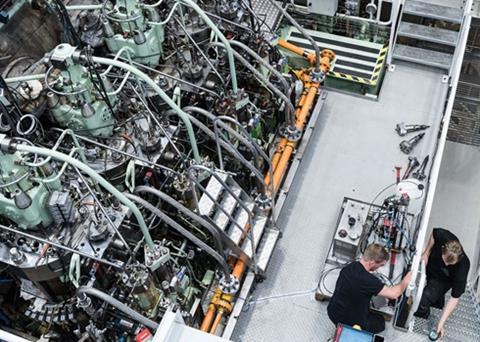A 3D-printed fuel injection nozzle developed by the Technical University of Denmark (DTU) and MAN Energy Solutions could reduce NOx emissions.
A post-doctoral researcher from DTU Mechanical Engineering, Thomas Dahmen, has developed a methodology for how 3D-printed nozzles could be designed to increase engine performance and product lifetime. The resulting 3D-printed injection nozzle showed such promising results in the DTU laboratory that it was subsequently tested on MAN Energy Solutions’ full-scale test engine at the Research Centre Copenhagen.
The design achieved better fuel flow with a more curved design, and initial trials suggest that the nozzle could help reduce NOx emissions from the engine. Further studies will be required to demonstrate this.
In addition to looking at the nozzle design, Dahmen compared the benefits of two different 3D printing techniques – Laser Powder Bed Fusion and Binder Jetting – in combination with using different types of materials for the nozzles. “This part of the analyses highlighted the suitability of Binder Jetting for intricate flow-related nozzle features and special high-temperature materials which would be impossible to realise with other manufacturing processes,” he said.
“At MAN Energy Solutions, we’ve long been aware that 3D-printed metal can provide us with some opportunities to design important parts of our ship engines that were not previously possible. This made a collaboration with DTU on exploring the potential an obvious choice,” says Peter Hagen, mechanical engineer at MAN Energy Solutions. “Thomas’s thorough investigation has given us a fantastic basis for moving forward with 3D printing of metal components for marine engines. I’m quite sure we’ll see them in real engines soon.”


